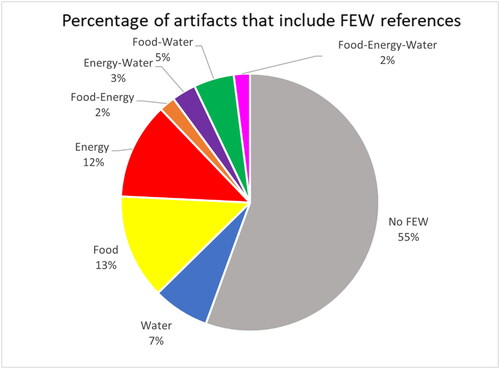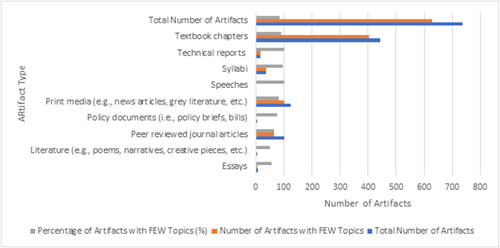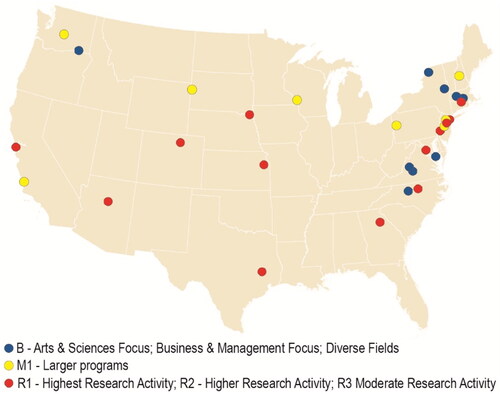Figures & data
Table 1. A total of 831 artifacts were submitted by 30 participating institutions.
Table 2. IES curriculum knowledge areas (from Vincent et al., Citation2013) used as coding guide.
Table 3. Coding protocol with definitions and examples of FEW Nexus coding approach.
Table 4. Not all course content explicitly describes explicitly describe connections to food, energy, or water systems.
Figure 3. Percentage of artifacts by type that contain FEW Nexus topics from larger sample of 30 institutions. Audiovisual materials, websites, and in-class activities were excluded from our sample (95 artifacts excluded). A total of 736 text-based artifacts were coded for FEW Nexus connections, with 628 containing explicit references to the FEW Nexus (85%).

Figure 4. Percentage of artifacts by type that contain FEW Nexus topics from our subsample of eight institutions that were subsequently coded at the paragraph level to identify areas of knowledge and FEW Nexus topics. Audiovisual materials, websites, and in-class activities were excluded from our subsample (46 artifacts excluded). A total of 143 text-based artifacts were coded for FEW Nexus connections, with 139 containing explicit references to the FEW Nexus (97%).

Figure 5. Percentage of FEW Nexus components referenced in sample of eight introductory IES courses.

Table 5. Most frequently coded knowledge areas from subsample of eight courses.
Table 6. H (high), M (medium), and L (low) areas of knowledge.
Table 7. Top five knowledge areas for each FEW Nexus system and connections between systems with frequencies below.
Table 8. Summary of knowledge area topics related to the FEW Nexus and example quotes to illustrate how the FEW Nexus is presented in course materials.


